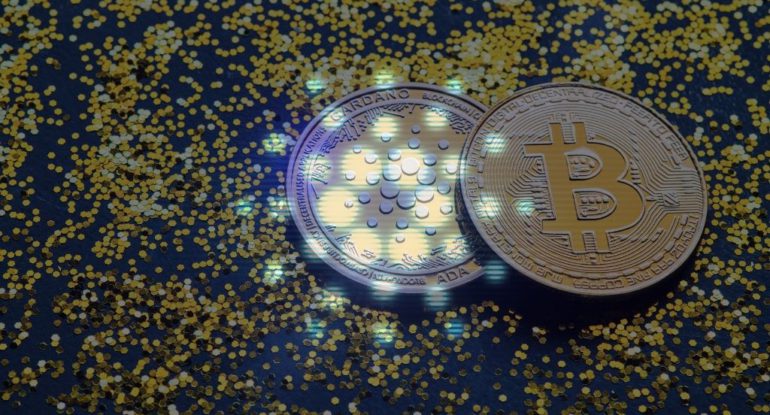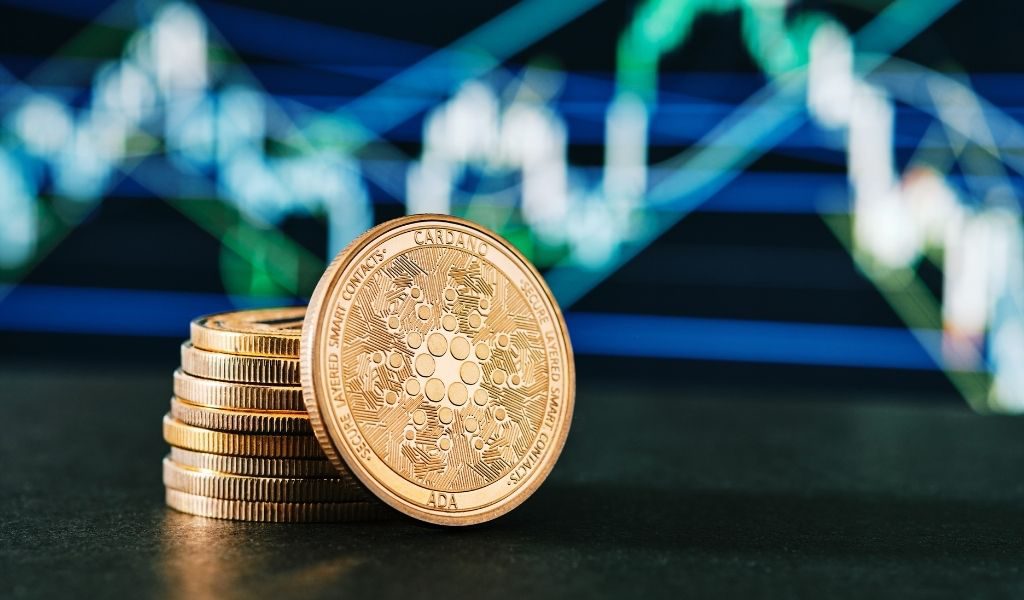What Is Stopping Cardano Price Growth And What Makes It Special?

For some time now, Cardano has been included in the top 10 cryptocurrency lists. It is one of the most stable cryptocurrencies on the market because it has never dropped out of the top 10 rankings. Cardano began to soar in 2021, and in February, it reached $1.3, making it the third-largest cryptocurrency by market cap.
Cardano has been falling freely since this ATH. The currency’s price has decreased by 75% during the last 8 months to $0.74. In 2021, Cardano’s price would keep rising quickly, and by the first week of September that year, it had increased to an all-time high of $2.96, where it still is today.
This price decline and the reason the Cardano price is not rising can be attributed to several things. The first cause is the collapse of the cryptocurrency market. The money market, including cryptocurrency, has fallen due to FED disruptions during the previous few months. Cardano and the overall crypto market are currently pessimistic due to FED.
The competition is another significant factor in why the price of Cardano is not rising. Exciting new initiatives are luring the crypto community with more substantial profits. One of the recent initiatives causing major coins like Cardano to fare poorly is Bitgert (BRISE). Today, Bitgert has garnered more attention than Cardano. Because of this, Bitgert’s price has been rising while Cardano’s price has been falling.
With its quickly expanding ecosystem and innovative goods, Bitgert has captured the interest of cryptocurrency enthusiasts. The disruptive Bitgert products have drawn the most attention, despite the Bitgert team delivering its vision quickly. Cardano and several other blockchains have been outpaced in speed by the Bitgert BRC20 blockchain.
Additionally, the Bitgert BRC20 levies a zero-gas cost for each transaction of $0.0000000000001. Because of this, the Bitgert chain is far superior to the Cardano blockchain, which is why Bitgert is gaining widespread adoption. The Bitgert ecosystem is expanding more quickly, and hundreds of new projects and products are on the horizon.
The main line is that while crypto enthusiasts are purchasing products like Bitgert, the price of Cardano is not rising. Investors are becoming more affluent with Bitgert’s rapid growth than with Cardano. It will be challenging for ADA to experience a significant price increase until the Cardano team achieves growth comparable to Bitgert’s.
Also Read: How Peer To Peer Makes Cardano Blockchain Special
What Makes Cardano Special?

Cardano has been knocked down the crypto top ten by market cap, with LUNA and XRP taking their place. However, the price of ADA has been climbing in recent months, and it may recapture prior highs as the market mood shifts optimistic. Cardano (ADA) is trading at $1.20 at writing, up 30% in the last month. As a result, ADA is the best-performing cryptocurrency in market capitalization. The price of ADA has started rising after a multi-month decline that saw it go from an all-time high of over $3 to less than $1 in 2022. Several causes are fueling the present rise.
Also, read – Cardano’s founder talks about Web3 and Bitcoin’s comfort
According to IOG, Cardano’s principal developer, this involves the full implementation of smart contract capabilities, an increase in developer activity recorded by the network, and the enhancement of Cardano to make it more decentralized and scalable. Above all, the variables above have resulted in an ecosystem boom. Hundreds of projects are being developed on Cardano, which might re-ignite the Ethereum Killer narrative.
Some of these projects were recently highlighted by IOG. The firm stated on its official Twitter account:
🌳 The #Cardano ecosystem is growing by leaps and bounds, with new players entering the ecosystem every day. Let’s start this week with a recap of the latest news & announcements from projects #BuildingOnCardano and contributing to its growth.
— Input Output (@InputOutputHK) March 28, 2022
Milkomeda is one of these efforts. This project, created as a scaling option for Cardano, will combine the network with Ethereum Virtual Machines (EVM) capabilities. On March 28, the Cardano project was unveiled. This network will be able to interface with other blockchains in the future, like Avalanche and Algorand.
IOG also announced Ergo, a decentralized exchange that will launch on April 4 on the Cardano testnet. With the upcoming debut of Singularity’s converter bridge solution and real asset tokenization with the Indigo Protocol, this network will see even more practical applications.
Cardano’s growth has exceeded expectations, and institutions are clamoring for more ADA.
Charles Hoskinson, the project’s creator, praised the project’s progress. Hoskinson forecasted a surge in the number of projects built on the network and the number of assets issued on Cardano in 2021. He stated that “millions” of both have exceeded his expectations on Twitter.
As the network prepares for another Hard Fork Combinator (HFC) event in the coming months, this number appears to rise. Hoskinson believes “Vasil” will cause another increase in the network activity, with a potential total value locked in (TVL).
As a result, ADA’s price may be able to maintain its rally in the medium to long run. Institutional investors may have picked up on this future trend, according to data from IntoTheBlock, as the number of addresses exchanging huge sums in ADA continues to rise.
Cardano is a blockchain platform that stands out for several reasons:

- Scientific Approach: One of the distinctive features of Cardano is its scientific and research-driven approach. The development team, including co-founder Charles Hoskinson, has strong academic backgrounds, and the platform is built on a foundation of peer-reviewed research. This approach aims to ensure the security, scalability, and sustainability of the platform.
- Layered Architecture: Cardano utilizes a layered architecture, separating the settlement layer (where ADA transactions occur) from the computation layer (where smart contracts are executed). This separation enhances security, flexibility, and scalability, allowing for more efficient upgrades and improvements.
- Ouroboros Consensus Algorithm: Cardano employs the Ouroboros proof-of-stake (PoS) consensus algorithm, which is designed to be energy-efficient and scalable. It divides time into epochs and slots, providing a secure and decentralized way to achieve consensus without the need for expensive mining hardware.
- Interoperability: Cardano aims to achieve interoperability with other blockchain networks, allowing seamless communication and transactions between different platforms. This focus on interoperability enhances Cardano’s potential for real-world adoption and collaboration with other projects.
- Sustainability and Governance: Cardano introduces a treasury system that is designed to fund future development and updates through a decentralized governance model. ADA holders have the ability to propose and vote on changes, fostering a democratic and community-driven approach to decision-making.
- Focus on Developing Countries: Cardano has a strong emphasis on bringing financial services to underserved populations in developing countries. By providing a secure and accessible platform, Cardano aims to contribute to financial inclusion and empowerment globally.
- Formal Verification: Cardano places a significant emphasis on formal methods and verification techniques. This means that smart contracts and other components are rigorously tested and verified mathematically before deployment, reducing the likelihood of bugs and vulnerabilities.
In summary, Cardano distinguishes itself through its scientific approach, layered architecture, sustainable governance model, and commitment to interoperability. These features collectively contribute to its goal of providing a secure, scalable, and inclusive blockchain platform.
FAQs about Cardano
- What is Cardano’s main innovation? Cardano’s main innovation lies in its scientific and research-driven approach to blockchain development. It distinguishes itself through a layered architecture, incorporating a settlement layer for transactions and a computation layer for smart contracts. The use of the Ouroboros consensus algorithm, which is energy-efficient and scalable, further enhances its uniqueness.
- How does Cardano ensure security and scalability? Cardano ensures security and scalability through its Ouroboros proof-of-stake consensus algorithm. By dividing time into epochs and slots, it achieves consensus in a decentralized and energy-efficient manner. The layered architecture also contributes to scalability, as upgrades and improvements can be made to individual layers without disrupting the entire system.
- What is the significance of Cardano’s focus on interoperability? Interoperability is crucial for Cardano as it enables seamless communication and transactions with other blockchain networks. This focus allows Cardano to collaborate with different projects and increases its potential for real-world adoption. The platform aims to be inclusive and interconnected, contributing to the broader blockchain ecosystem.
- How does Cardano address governance and sustainability? Cardano introduces a decentralized governance model where ADA holders can propose and vote on changes. This allows the community to actively participate in decision-making processes. Additionally, Cardano incorporates a treasury system to fund future development, ensuring sustainability without relying on external funding sources.
- What sets Cardano apart in terms of smart contract development? Cardano prioritizes formal verification in its smart contract development process. This means that before deployment, smart contracts undergo rigorous mathematical testing and verification to minimize the risk of bugs and vulnerabilities. This commitment to formal methods enhances the security and reliability of the smart contract ecosystem on Cardano.




























































